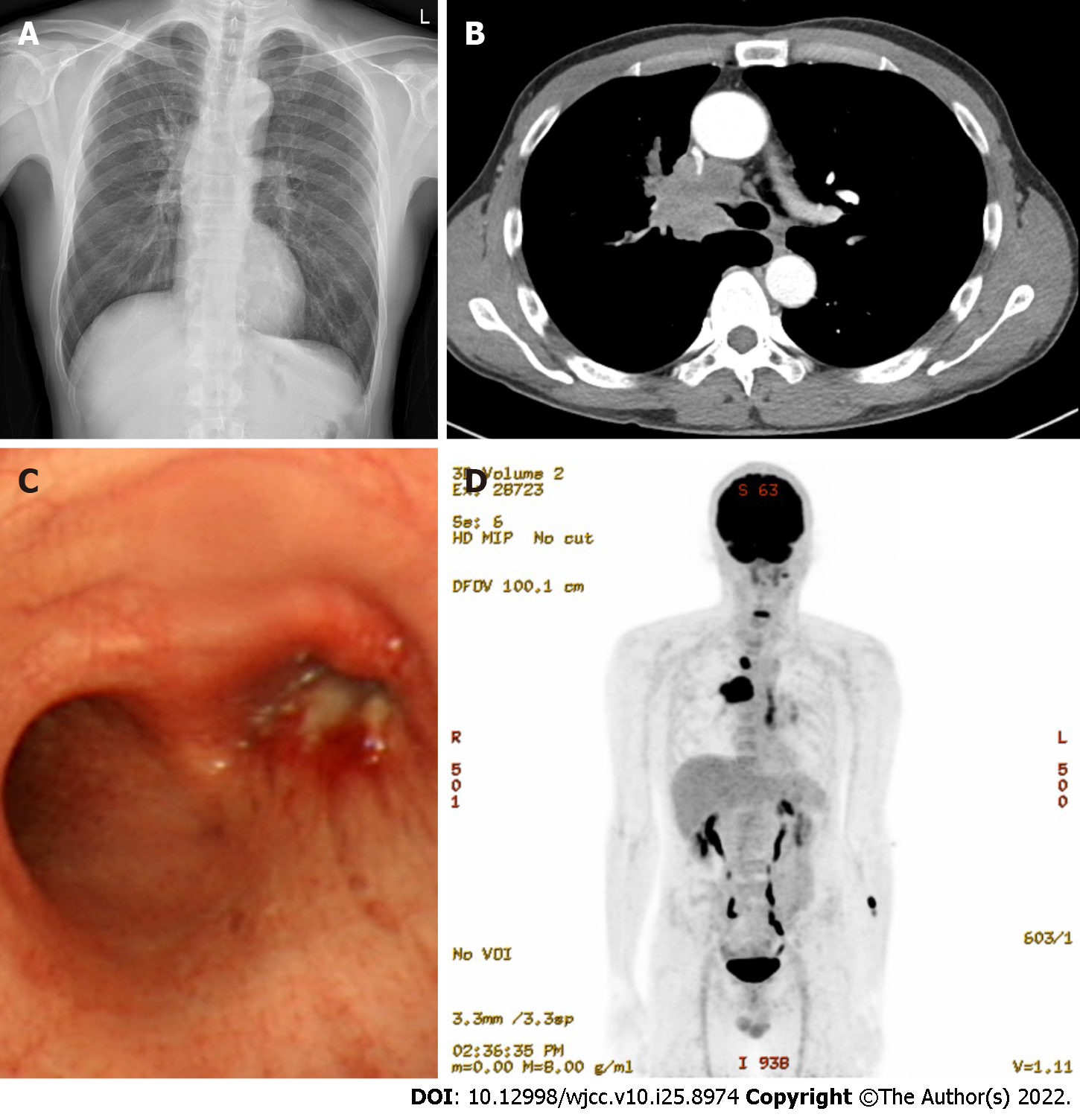Copyright
©The Author(s) 2022.
World J Clin Cases. Sep 6, 2022; 10(25): 8974-8979
Published online Sep 6, 2022. doi: 10.12998/wjcc.v10.i25.8974
Published online Sep 6, 2022. doi: 10.12998/wjcc.v10.i25.8974
Figure 1 Initial chest radiography, chest computed tomography scan, bronchoscopy, and positron emission tomography-computed tomography.
A: Chest radiography reveals a mass-like shadow in the right supra-hilar area; B: Chest computed tomography (CT) showing narrowing of the right main bronchus secondary to a mass; C: Bronchoscopy confirms that the right bronchus is almost completely obstructed by a mass; D: Positron emission tomography-CT showing a 5-cm hypermetabolic mass (SUVmax 20.8) in the right upper lobe and hypermetabolic 4R and 2R lymph nodes.
Figure 2 Changes on chest radiography.
A: On hospital day 3, chest radiography shows near total atelectasis of the right lung; B: On hospital day 5, atelectasis in the right lung is aggravated; C: On hospital day 16, the near total atelectasis of the right lung has improved, although right upper lobe atelectasis remains; D: On hospital day 19, right upper lobe atelectasis has improved.
Figure 3 Changes on chest computed tomography scan.
A: After two cycles of gemcitabine/cisplatin chemotherapy, the size of the right upper lobe mass has decreased; B: After concurrent chemoradiotherapy, the right main bronchus, narrowed by the tumor, has further improved.
- Citation: Yoo SS, Lee SY, Choi SH. Extracorporeal membrane oxygenation for lung cancer-related life-threatening hypoxia: A case report. World J Clin Cases 2022; 10(25): 8974-8979
- URL: https://www.wjgnet.com/2307-8960/full/v10/i25/8974.htm
- DOI: https://dx.doi.org/10.12998/wjcc.v10.i25.8974











